Film
Film
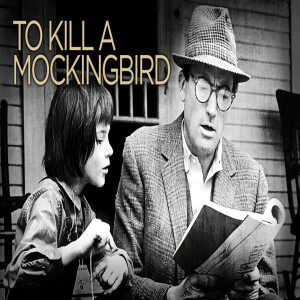


Wednesday Mar 15, 2023
Season 6: Episode 293 - AMERICA GOES DARK: To Kill A Mockingbird (H. Lee/1963)
Wednesday Mar 15, 2023
Wednesday Mar 15, 2023
Book: To Kill A Mockingbird
By Harper Lee
Film: To Kill A Mockingbird (1962)
To Kill a Mockingbird is a novel by the American author Harper Lee. It was published in 1960 and was instantly successful. In the United States, it is widely read in high schools and middle schools. To Kill a Mockingbird has become a classic of modern American literature, winning the Pulitzer Prize. The plot and characters are loosely based on Lee's observations of her family, her neighbors and an event that occurred near her hometown of Monroeville, Alabama, in 1936, when she was ten. Although the novel deals with rape and racial inequality, the book is told with warmth and humour.
The 1962 American drama film directed by Robert Mulligan. The screenplay by Horton Foote is based on Harper Lee's 1960 Pulitzer Prize–winning novel of the same name. The film stars Gregory Peck as Atticus Finch and Mary Badham as Scout. It marked the film debut of Robert Duvall, William Windom and Alice Ghostley. It gained overwhelmingly positive reception from both the critics and the public; a box-office success, it earned more than six times its budget. The film won three Academy Awards, including Best Actor for Peck, and was nominated for eight, including Best Picture. In 1995, the film was selected by the Library of Congress for preservation in the National Film Registry as "culturally, historically, or aesthetically significant".
Opening Credits; Introduction (2.33); Background History (17.50); Plot Synopsis (20.57); Book Thoughts(24.52); Let's Rate (1:33.07); Amazing Design Advertisement (1:31.42); Introducing a Film (1:37.53); Film Trailer (1:39.16); Lights, Camera, Action (1:41.55); How Many Stars (1:32.44); End Credits (2:41.44); Closing Credits (2:43.49)
Opening Credits– Epidemic Sound – copyright 2021. All rights reserved
Closing Credits: Not All Heroes Wear Capes by Owl City – taken from the album Cinematic. Copyright 2018 Sky Harbor Studios
Original Music copyrighted 2020 Dan Hughes Music and the Literary License Podcast.
All rights reserved. Used with Kind Permission.
All songs available through Amazon Music.
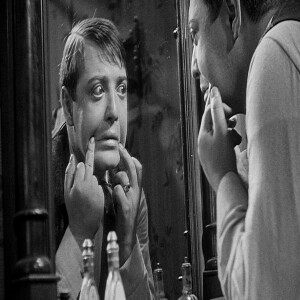


Saturday Feb 25, 2023
Season 6: Episode 291 - M&M: M (1931)/Badlands (1973)
Saturday Feb 25, 2023
Saturday Feb 25, 2023
Opening Credits– Epidemic Sound – copyright 2021. All rights reserved
Closing Credits: Amor De Los Muertos by LVCRFT featuring La Llorona & Devil Dahlia. Taken from the album Dia De Los Muertos
Original Music copyrighted 2020 Dan Hughes Music and the Literary License Podcast.
All rights reserved. Used by Kind Permission.
All songs available through Amazon Music.



Saturday Feb 18, 2023
Season 6: Episode 290 - MAKE/REMAKE: Scarface (1931)/Scarface (1983)
Saturday Feb 18, 2023
Saturday Feb 18, 2023
Scarface (1932)
Scarface (also known as Scarface: The Shame of the Nation and The Shame of a Nation) is a 1932 American pre-Code gangster film directed by Howard Hawks and produced by Hawks and Howard Hughes. The screenplay, by Ben Hecht, is based loosely on the 1929 novel by Armitage Trail which was inspired by Al Capone. The film stars Paul Muni as Italian immigrant gangster Antonio "Tony" Camonte, a gangster who violently rises through the Chicago gangland, with a supporting cast that includes George Raft and Boris Karloff. Camonte's rise to power dovetails with his relentless pursuit of his boss's mistress while his own sister pursues his best hitman. In an overt tie to the life of Capone, one scene depicts a version of the Saint Valentine's Day Massacre. After Hughes purchased the rights to Trail's novel, Hughes quickly selected Hawks to direct and Hecht to write the film's screenplay. Beginning in January 1931, Hecht wrote the script over an eleven-day period. Scarface was produced before the introduction of the Production Code in 1934, which enforced regulations on film content. However, the Hays Code, a more lenient precursor, called for major alterations, including a prologue condemning gangsters, an alternate ending to more clearly reprehend Camonte, and the alternative title The Shame of a Nation. The censors believed the film glorified violence and crime. These changes delayed the film by a year, though some showings retained the original ending. Modern showings of the film have the original ending, though some DVD releases also include the alternate ending as a feature; these versions maintain the changes Hughes and Hawks were required to make for approval by the Hays Office. No completely unaltered version is known to exist.
Scarface (1983)
Scarface is a 1983 American crime drama film directed by Brian De Palma and written by Oliver Stone. Loosely based on the 1929 novel of the same name and serving as a loose remake of the 1932 film, it tells the story of Cuban refugee Tony Montana (Al Pacino), who arrives penniless in Miami during the Mariel boatlift and becomes a powerful and extremely homicidal drug lord. The film co-stars Steven Bauer, Michelle Pfeiffer, Mary Elizabeth Mastrantonio and Robert Loggia. De Palma dedicated this version of Scarface to the writers of the original film, Howard Hawks and Ben Hecht. Pacino became interested in a remake of the 1932 version after seeing it, and he and producer Martin Bregman began to develop it. Sidney Lumet was initially hired to direct the film but was replaced by De Palma, who hired Stone to write the script. Filming took place from November 1982 to May 1983, in Los Angeles and Miami. The film's soundtrack was composed by Giorgio Moroder. Scarface premiered in New York City on December 1, 1983, and was released on December 9, 1983, by Universal Pictures. The film grossed $45 million at the domestic box office and $66 million worldwide. Initial critical reception was negative due to its excessive violence, profanity, and graphic drug usage. Some Cuban expatriates in Miami objected to the film's portrayal of Cubans as criminals
Opening Credits; Introduction (.37); Background History (31.40); Scarface (1932) Film Trailer (34.25); The Original (37.00); Let's Rate (1:18.47); Amazing Design Advertisement (1:23.06); Introducing a Remake (1:24.18); Scarface (1983) Film Trailer (1:26.21); The Remake (1:29.35); How Many Stars (2:32.14); End Credits (2:49.03); Closing Credits (2:50.36)
Opening Credits– Epidemic Sound – copyright 2021. All rights reserved
Closing Credits: Gangsta Paradise by Coolio featuring LV. Taken from the album Gangsta Paradise, I am LV. Copyright 1995 Tommy Boy/Warner Brothers/MCA Records
Original Music copyrighted 2020 Dan Hughes Music and the Literary License Podcast.
All rights reserved. Used with Kind Permission.
All songs available through Amazon Music.



Sunday Feb 05, 2023
Sunday Feb 05, 2023
Book: The Color Purple
By Alice Walker
Film: The Color Purple (1985)
The Color Purple is a 1982 epistolary novel by American author Alice Walker which won the 1983 Pulitzer Prize for Fiction and the National Book Award for Fiction. It was later adapted into a film and musical of the same name. The novel has been the frequent target of censors and appears on the American Library Association list of the 100 Most Frequently Challenged Books of 2000–2009 at number seventeenth because of the sometimes explicit content, particularly in terms of violence.
The Color Purple is a 1985 American epic coming-of-age period drama film directed by Steven Spielberg and written by Menno Meyjes, based on the Pulitzer Prize-winning 1982 novel of the same name by Alice Walker. It was Spielberg's eighth film as a director, and marked a turning point in his career, as it was a departure from the summer blockbusters for which he had become known. It was also the first feature film directed by Spielberg for which John Williams did not compose the music, instead featuring a score by Quincy Jones, who also produced. The cast stars Whoopi Goldberg in her breakthrough role, with Danny Glover, Oprah Winfrey, Margaret Avery, Rae Dawn Chong, Willard Pugh, and Adolph Caesar. Filmed in Anson and Union counties in North Carolina, the film tells the story of a young African-American girl named Celie Harris and shows the problems African-American women experienced during the early 20th century, including domestic violence, incest, paedophilia, poverty, racism, and sexism. Celie is transformed as she finds her self-worth through the help of two strong female companions
Opening Credits; Introduction (2:34); Background History (17.09); The Color Purple Plot Synopsis (18.27); Book Thoughts (26.15); Let's Rate (1:27.30); Amazing Design Advertisement (1:27.55); Introducing a Film (1:37.07); The Color Purple Film Trailer (1:33.40); Lights, Camera, Action (1:34.57); How Many Stars (2:26.07); End Credits (2:31.47); Closing Credits (2:34.21)
Opening Credits– Epidemic Sound – copyright 2021. All rights reserved
Closing Credits: The Color Purple by Jennifer Hudson and Cynthia Ervio. Taken from the Broadway Cast Album. The Color Purple. Copyright 2016 TCP 2015 Broadway New Cast Recording.
Original Music copyrighted 2020 Dan Hughes Music and the Literary License Podcast.
All rights reserved. Used by Kind Permission.
All songs available through Amazon Music.
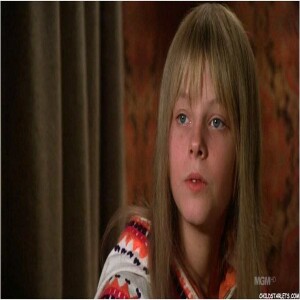


Saturday Jan 28, 2023
Saturday Jan 28, 2023
The Little Girl Who Lives Down the Lane (1976)
The Little Girl Who Lives Down the Lane is a 1976 cross-genre film directed by Nicolas Gessner and starring Jodie Foster, Martin Sheen, Alexis Smith, Mort Shuman, and Scott Jacoby. It was a co-production of Canada and France and written by Laird Koenig, based on his 1974 novel of the same title. The plot focuses on 13-year-old Rynn Jacobs (Foster), a child whose absent poet father and secretive behaviours prod the suspicions of her conservative small-town Maine neighbours. The adaptation, originally intended as a play, was filmed in Quebec on a small budget. The production later became the subject of controversy over reports that Foster had conflicts with producers over the filming and inclusion of a nude scene, but a 21-year-old body double (Foster's sister) was used. After a screening at the 1976 Cannes Film Festival, a court challenge was launched regarding distribution, and a general release followed in 1977.
Alice Sweet Alice (1976)
Alice, Sweet Alice (originally titled Communion) is a 1976 American slasher film co-written and directed by Alfred Sole, and starring Linda Miller, Paula Sheppard, and Brooke Shields in her film debut. Set in 1961 New Jersey, the film focuses on a troubled adolescent girl who becomes a suspect in the brutal murder of her younger sister at her First Communion, as well as in a series of unsolved stabbings that follow. Inspired by Nicolas Roeg's Don't Look Now (1973) and the films of Alfred Hitchcock, writer-director Sole devised the screenplay with Rosemary Ritvo, an English professor who was his neighbor. At the time, Sole had been working as an architect restoring historic buildings in his hometown of Paterson, New Jersey, and several properties he had worked on were used as shooting locations. Filming took place throughout the summer of 1975 in Paterson and Newark. The film premiered at the Chicago International Film Festival under its original title, Communion, in November 1976, and was released under this title in London in September 1977. After being acquired by Allied Artists, it was re-titled Alice, Sweet Alice, and released in the United States on November 18, 1977. Another theatrical re-release occurred in 1981 under the title Holy Terror, which marketed the popularity of Shields after her performance in Louis Malle's Pretty Baby (1978). While not prosecuted for obscenity, the film was seized and confiscated in the UK under Section 3 of the Obscene Publications Act 1959 during the video nasty panic, and was controversial in Ireland due to its apparent anti-Catholic themes.
Opening Credits; Introduction (1.06); Background History (33.19); The Little Girl Who Lived Down the Lane (1976) Film Trailer (36.06); The Original (37.02); Let's Rate (1:22.57); Amazing Design Advertisement (1:43.44); Introducing the Double Feature (1:44.27); Alice Sweet Alice (1976) Film Trailer (1:46.31); The Attraction (1:48.12); How Many Stars (3:01.15); End Credits (3:23.15); Closing Credits (3:24.19)
Opening Credits– Epidemic Sound – copyright 2021. All rights reserved
Closing Credits: Thank Heaven For Little Girls by Maurice Chevalier. Taken from the original Broadway production of GIGI. Copyright 1958 MGM Records
Original Music copyrighted 2020 Dan Hughes Music and the Literary License Podcast.
All rights reserved.
Used With Kind Permission.
All songs available through Amazon Music.
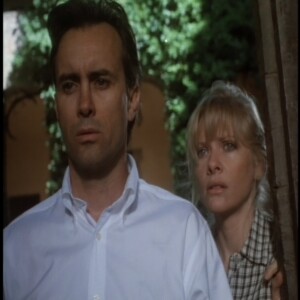


Saturday Jan 21, 2023
Season 6: Episode 285 - MAKE/REMAKE: Castle Freak (1995/2020)
Saturday Jan 21, 2023
Saturday Jan 21, 2023
Castle Freak (1995)
Castle Freak is a 1995 American direct-to-video horror film directed by Stuart Gordon. The film stars Jeffrey Combs as John Reilly, an American recovering alcoholic who inherits an Italian castle when a distant relative passes away. John travels to Italy with his estranged wife Susan (Barbara Crampton) and blind daughter Rebecca (Jessica Dollarhide). The three plan to stay at the castle, but unbeknownst to them, a freakish monster locked away in the basement of the castle is about to escape and commit a series of murders. The police place John as the prime suspect, leading him to confront his alcoholism, fight the demon and prove himself innocent. Castle Freak went into production in 1994 after Gordon noticed art for the film in producer Charles Band's office. Gordon agreed to develop the film on Band's condition that the film take place in a castle, contain a freak, and would be shot on a very low budget. Gordon obliged as he would be able to cast who he wanted in the film and would get the final cut. The film was shot in 1994 in a castle owned by Band in Italy, where Gordon had previously shot The Pit and the Pendulum.
Castle Freak (2020)
Castle Freak is a 2020 American direct-to-video horror film that was directed by Tate Steinsiek. It has been billed as a reboot of the 1995 Stuart Gordon film by the same name, which is a loose adaptation of the stories "The Outsider" and "The Dunwich Horror" by H.P. Lovecraft.
Opening Credits; Introduction (.40); Background History (29.18); Castle Freak (1995) Film Trailer (30.35); The Original (32.43); Let's Rate (1:10.15); Amazing Design Advertisement (1:30.27); Introducing a Remake (1:31.38); Castle Freak (2020) Film Trailer (1:32.06); The Remake (1:34.09); How Many Stars (2:18.31); End Credits (2:29.58); Closing Credits (2:31.48)
Opening Credits– Epidemic Sound – copyright 2021. All rights reserved
Closing Credits: Freak Like Me by The Sugababes. Taken from the album Angels With Dirty Faces. Copyright 2002 Island/Universal Records.
Original Music copyrighted 2020 Dan Hughes Music and the Literary License Podcast.
All rights reserved. Used with Kind Permission.
All songs available through Amazon Music.



Saturday Jan 14, 2023
Saturday Jan 14, 2023
Book: We Need to Talk About Kevin
By Lionel Shriver
Film: We Need to Talk About Kevin (2011)
We Need to Talk About Kevin is a 2003 novel by Lionel Shriver, published by Serpent's Tail, about a fictional school massacre. It is written from the first person perspective of the teenage killer's mother, Eva Khatchadourian, and documents her attempt to come to terms with her psychopathic son Kevin and the murders he committed, as told in a series of letters from Eva to her husband. The novel, Shriver's seventh, won the 2005 Orange Prize, a UK-based prize for female authors of any country writing in English. In 2011 the novel was adapted into a film.
We Need to Talk About Kevin is a 2011 psychological thriller drama film directed by Lynne Ramsay from a screenplay she co-wrote with Rory Stewart Kinnear, based on the 2003 novel of the same name by Lionel Shriver. A long process of development and financing began in 2005, with filming commencing in April 2010. Tilda Swinton stars as the mother of Kevin, struggling to come to terms with her psychopathic son and the horrors he has committed. The film premiered at the 2011 Cannes Film Festival and was released in the United Kingdom on 21 October 2011.
Opening Credits; Introduction (2.33); Amazing Design Advertisement (24.07); Background History (25.19); Plot Synopsis (26.24); Book Thoughts (32.24); Let's Rate (1:30.21); Introducing a Film (1:33.10); Film Trailer (1:34.34); Lights, Camera, Action (1:36.11); How Many Stars (2:36.00); End Credits (2:49.50); Closing Credits (2:51.34)
Opening Credits– Epidemic Sound – copyright 2021. All rights reserved
Closing Credits: I Don’t Like Mondays by The Boomtown Rats. Taken from the album The Fine Art of Surfacing. Copyright 1979 Ensign/Columbia Records
Original Music copyrighted 2020 Dan Hughes Music and the Literary License Podcast.
All rights reserved. Used with Kind Permission.
All songs available through Amazon Music.
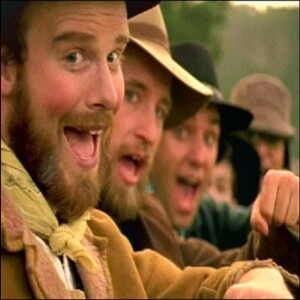


Saturday Jan 07, 2023
Season 6: Episode 282 - M&M: Eating Raoul (1984)/Cannibal The Musical (1994)
Saturday Jan 07, 2023
Saturday Jan 07, 2023
Cannibal the Musical (1993)
Cannibal! The Musical (originally known as Alferd Packer: The Musical) is a 1993 American black comedy musical film directed, written, produced, co-scored by and starring Trey Parker in his directorial debut while studying at the University of Colorado at Boulder, before reaching fame with South Park alongside his friend Matt Stone who also stars in and produced the film. It is loosely based on the true story of Alferd Packer and the sordid details of the trip from Utah to Colorado that left his five fellow travelers dead and partially eaten. Trey Parker (credited as Juan Schwartz) stars as Alferd Packer, with frequent collaborators Stone, Dian Bachar, and others playing the supporting roles. A live staged version was performed at Sierra College, in Rocklin, California, in May 1998. It was followed by Dad's Garage Theater, Atlanta Georgia, in the fall of 1998. The Dad's Garage version is highlighted in the special features of Troma's DVD release of the movie. The show has continued to find small theaters and audiences across America and beyond for many years. In 2001, a production was staged Off-Broadway at the Kraine Theater on East 4th Street in New York. A large-scale stage production was produced by The Rival Theatre Company at the 2008 Edinburgh Festival Fringe. It featured West End performers. It was executive produced by Jason McHugh and directed by Frazer Brown
Eating Raoul (1982)
Eating Raoul is a 1982 American black comedy film written, directed by and starring Paul Bartel with Mary Woronov, Robert Beltran, Ed Begley Jr., Buck Henry, and Susan Saiger. It is about a prudish married couple (Bartel and Woronov) who resort to killing and robbing affluent swingers to earn money for their dream restaurant. The writers commissioned a single-issue comic book based on the film for promotion; it was created by underground comix creator Kim Deitch. It would also become a hit off Broadway musical.
Opening Credits; Introduction (1.05); Amazing Design Advertisement (52.51); Background History (54.04); Eating Raoul Film Trailer (54.49); The Original (56.25); Let's Rate (1:42.42); Introducing the Double Feature (1:48.50); Cannibal – The Musical Film Trailer (1:51.11); The Attraction (1:52.53); How Many Stars (2:35.19); Over All Thought (2:36.09) End Credits (2:41.52; Closing Credits (2:43.21)
Opening Credits– Epidemic Sound – copyright 2021. All rights reserved
Closing Credits: Eat Me – Demi Lovatto Featuring Ryan and Serpent. -. Taken from the forthcoming album ‘Holy Fvck’. Copyright 2022 Island Records.
Original Music copyrighted 2020 Dan Hughes Music and the Literary License Podcast.
All rights reserved. Used With Kind Permission.
All songs available through Amazon Music.
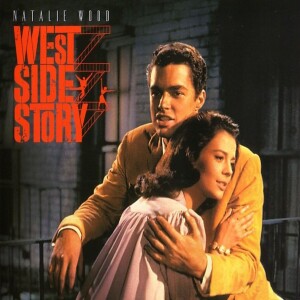


Monday Dec 19, 2022
Season 6: Episode 281 - MAKE/REMAKE: West Side Story (1961/2021)
Monday Dec 19, 2022
Monday Dec 19, 2022
West Side Story (1961)
West Side Story is a 1961 American musical romantic drama film directed by Robert Wise and Jerome Robbins. With a screenplay by Ernest Lehman, the film is an adaptation of the 1957 Broadway musical of the same title, which in turn was inspired by Shakespeare's play Romeo and Juliet. It stars Natalie Wood, Richard Beymer, Russ Tamblyn, Rita Moreno, and George Chakiris, and was photographed by Daniel L. Fapp in Super Panavision 70. The music was composed by Leonard Bernstein, with lyrics by Stephen Sondheim. Released on October 18, 1961, through United Artists, the film received high praise from critics and viewers, and became the highest-grossing film of 1961. It was nominated for 11 Academy Awards and won 10, including Best Picture (in addition to a special award for Robbins), becoming the record holder for the most wins for a musical.
West Side Story (2021)
West Side Story is a 2021 American musical romantic drama film directed and co-produced by Steven Spielberg from a screenplay by Tony Kushner. It is the second feature-length adaptation of the 1957 stage musical of the same name.It stars Ansel Elgort and Rachel Zegler in her film debut with Ariana DeBose, David Alvarez, Mike Faist, and Rita Moreno in supporting roles. Moreno, who starred in the 1961 film adaptation, also served as an executive producer alongside Kushner.[3] The film features music composed by Leonard Bernstein with lyrics by Stephen Sondheim. The film entered development in 2014 at 20th Century Fox; Kushner began writing the screenplay in 2017. In January 2018, Spielberg was hired and casting began that September. Justin Peck choreographed the dance sequences. Principal photography occurred in New York and New Jersey; filming began in July 2019 and ran for two months. The film was a box office bomb losing over $100million dollars at the box office.
Opening Credits; Introduction (.37); Background History (28.20); West Side Story (1961) Film Trailer (30.07); The Original (34.04); Let's Rate (1:55.39); Amazing Design Advertisement (2:06.54); Introducing a Remake (2:08.06); West Side Story (2021) Film Trailer (2:10.10); The Remake (2:12.25); How Many Stars (3:2128); End Credits (3:48.15); Closing Credits (3:50.01)
Opening Credits– Epidemic Sound – copyright 2021. All rights reserved
Closing Credits: Welcome Christmas – performed by the MGM Chorus. Taken from the 1966 How The Grinch Stole Christmas Television Soundtrack. Copyright 1966 Leo The Lion Records
Original Music copyrighted 2020 Dan Hughes Music and the Literary License Podcast.
All rights reserved.
All songs available through Amazon Music.



Sunday Dec 04, 2022
Sunday Dec 04, 2022
Book: We Have Always Lived in The Castle
By Shirley Jackson
Film: We Have Always Live in the Castle
(2018)
We Have Always Lived in the Castle is a 1962 mystery novel by American author Shirley Jackson. It was Jackson's final work, and was published with a dedication to Pascal Covici, the publisher, three years before the author's death in 1965. The novel is written in the voice of eighteen-year-old Mary Katherine "Merricat" Blackwood, who lives with her sister and uncle on an estate in Vermont. Six years before the events of the novel, the Blackwood family experienced a tragedy that left the three survivors isolated from their small village. The novel was first published in hardcover in North America by Viking Press, and has since been released in paperback and as an audiobook and e-book.[2] It has been described as Jackson's masterpiece.
We Have Always Lived in the Castle is a 2018 American mystery thriller film directed by Stacie Passon, written by Mark Kruger, and starring Taissa Farmiga, Alexandra Daddario, Crispin Glover, and Sebastian Stan. It was based on the 1962 novel of the same name by Shirley Jackson.
Opening Credits; Introduction (2:31); Amazing Design Advertisement ( 19.14); Background History (20.26); Plot Synopsis (21.26); Book Thoughts (25.32); Let's Rate (1:07.56); Introducing a Film (1:16.06); We Have Always Lived In The Castle Film Trailer (1:17.11); Lights, Camera, Action (1:19.02); How Many Stars (1:59.49); End Credits (2:04.39); Closing Credits (2:06.26)
Opening Credits– Epidemic Sound – copyright 2021. All rights reserved
Closing Credits: I’ll Be Home For Christmas by Elvis Presley and Carrie Underwood. Taken from the album Christmas Duets. Copyright 2008 RCA Victor Records
Original Music copyrighted 2020 Dan Hughes Music and the Literary License Podcast.
All rights reserved. Used with Kind Permission.
All songs available through Amazon Music.
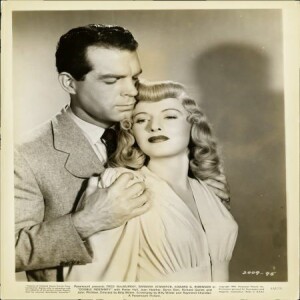


Saturday Nov 26, 2022
Season 6: Episode 277 - M&M: Double Indemnity (1944)/Basic Instinct (1992)
Saturday Nov 26, 2022
Saturday Nov 26, 2022
Double Indemnity (1944)
Double Indemnity is a 1944 American crime film noir directed by Billy Wilder, co-written by Wilder and Raymond Chandler, and produced by Buddy DeSylva and Joseph Sistrom. The screenplay was based on James M. Cain's 1943 novel of the same title, which appeared as an eight-part serial for the Liberty magazine in February 1936. The film stars Fred MacMurray as an insurance salesman, Barbara Stanwyck as a provocative housewife who is accused of killing her husband, and Edward G. Robinson as a claims adjuster whose job is to find phony claims. The term "double indemnity" refers to a clause in certain life insurance policies that doubles the payout in cases when the death is accidental. Praised by many critics when first released, the film was nominated for seven Academy Awards but did not win any. Widely regarded as a classic, it often is cited as having set the standard for film noir.
Basic Instinct (1992)
Basic Instinct is a 1992 neo-noir erotic thriller film directed by Paul Verhoeven and written by Joe Eszterhas. The film follows San Francisco police detective Nick Curran (Michael Douglas), who is investigating the brutal murder of a wealthy rock star. During the investigation, Curran becomes involved in a torrid and intense relationship with the prime suspect, Catherine Tramell (Sharon Stone), an enigmatic writer. Eszterhas developed the script in the 1980s. It became a subject of a bidding war until Carolco Pictures acquired the rights to the film. From there, Verhoeven signed on to direct and Douglas and Stone joined the project, after many actresses were considered for the role of Tramell. Before its release, Basic Instinct generated controversy due to its overt sexuality and violence, including a rape scene. Gay rights activists criticized the film's depiction of homosexual relationships and the portrayal of a bisexual woman as a murderous psychopath. In one scene, Stone's vulva was filmed as she crossed her legs, which she claimed was done without her knowledge, a claim denied by the director. There are several cuts available.
Opening Credits; Introduction (1.05); Amazing Design Advertisement (20.54); Background History (22.06); Double Indemnity (1944) Film Trailer (23.41); The Original (25.54); Let's Rate (1:19.08); Introducing the Double Feature (1:36.27); Basic Instinct (1992) Film Trailer (1:39.07); The Attraction (1:41.16); How Many Stars (2:37.14); End Credits (2:41.56); Closing Credits (2:43.10)
Opening Credits– Epidemic Sound – copyright 2021. All rights reserved
Closing Credits: Man Smart, Women Smarter – by Harry Belafonte. Taken from the album Calypso. Copyright 1955 RCA Victor
Original Music copyrighted 2020 Dan Hughes Music and the Literary License Podcast.
All rights reserved. Used by Kind Permission.
All songs available through Amazon Music.
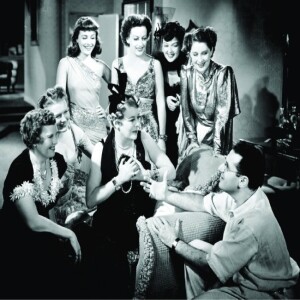


Sunday Nov 20, 2022
Sunday Nov 20, 2022
The Women (1939)
The Women is a 1939 American comedy-drama film directed by George Cukor. The film is based on Clare Boothe Luce's 1936 play of the same name, and was adapted for the screen by Anita Loos and Jane Murfin, who had to make the film acceptable for the Production Code for it to be released. The film stars Norma Shearer, Joan Crawford, Rosalind Russell, Paulette Goddard, Joan Fontaine, Lucile Watson, Mary Boland, Florence Nash, and Virginia Grey. Marjorie Main and Phyllis Povah also appear, reprising their stage roles from the play. Ruth Hussey, Virginia Weidler, Butterfly McQueen, and Hedda Hopper also appear in smaller roles. Fontaine was the last surviving actress with a credited role in the film; she died in 2013. It is also important to note that even the animals and pets are all female. The film continued the play's all-female tradition—the entire cast of more than 130 speaking roles was female. Set in the glamorous Manhattan apartments of high society evoked by Cedric Gibbons, and in Reno, Nevada, where they obtain their divorces, it presents an acidic commentary on the pampered lives and power struggles of various rich, bored wives and other women they come into contact with. Filmed in black and white, it includes a six-minute fashion parade filmed in Technicolor, featuring Adrian's most outré designs; often cut in modern screenings, it has been restored by Turner Classic Movies. On DVD, the original black-and-white fashion show, which is a different take, is available for the first time.
The Opposite Sex (1956)
The Opposite Sex is a 1956 American musical romantic comedy film shot in Metrocolor and CinemaScope.[3][4] The film was directed by David Miller and stars June Allyson, Joan Collins, Dolores Gray, Ann Sheridan, and Ann Miller, with Leslie Nielsen, Jeff Richards, Agnes Moorehead, Charlotte Greenwood, Joan Blondell, and Sam Levene.
The Opposite Sex is a remake of the 1939 comedy film The Women. Both films are based on Clare Boothe Luce's original 1936 play.
Unlike the 1936 play and the 1939 film adaptation, The Opposite Sex includes musical numbers and features male actors who portray the husbands and boyfriends, whose characters were only referred to in the previous film and stage versions.[6] This alters the structure and tone of the base storyline significantly.
Opening Credits; Introduction (.37); Background History (42.13);The Women (1939) Film Trailer (44.51); The Original (48.16); Let's Rate (1:43.07); Amazing Design (1:59.54); Introducing a Remake (2:01.07); The Opposite Sex (1956) Film Trailer (2:01.41); The Remake (2:05.22); How Many Stars (2:44.07); End Credits (2:58.26); Closing Credits (3:00.39)
Opening Credits– Epidemic Sound – copyright 2021. All rights reserved
Closing Credits: There’s Always A Woman – by Kaye Ballard and Sally Mayes Taken from the album Unsung Sondheim. Copyright 1993 Varese Sarabande
Original Music copyrighted 2020 Dan Hughes Music and the Literary License Podcast.
All rights reserved. Used with Kind Permission
All songs available through Amazon Music.



Sunday Nov 06, 2022
Sunday Nov 06, 2022
Book: Gone Girl
By Gillian Flynn
Film: Gone Girl (2014)
Gone Girl by Gillian Flynn was published in June 2012 and become an instant success. The sense of suspense in the novel would come whether Nick Dunne is responsible for the disappearance of his wife Amy. The book would be told in three parts changing the point of view between the different parts.
The film, directed by David Fincher and starring Rosamund Pike and Ben Affleck. Set in Missouri, the story is a postmodern mystery that follows the events surrounding Nick Dunne who becomes the prime suspect in the sudden disappearance of his wife, Amy. The film also stars Neil Patrick Harris and Tyler Perry. It would be the highest grossing film of David Fincher’s career earning $369million at the box office.
Opening Credits; Introduction (2.33); Background History (6.50); Gone Girl Plot Synopsis (7.52); Book Thoughts(14.51); Let's Rate (41.41); Amazing Design Advertisement (42.33); Introducing a Film (43.44); Gone Girl Film Trailer (45.01); Lights, Camera, Action (47.28); How Many Stars (1:24.18); End Credits (1:26.06); Closing Credits (1:27.54)
Opening Credits– Epidemic Sound – copyright 2021. All rights reserved
Closing Credits: Bitch by Meredith Brookes. Taken from the album Blurring the Edges. Copyright 1997 Capitol-EMI Records
Original Music copyrighted 2020 Dan Hughes Music and the Literary License Podcast.
All rights reserved. Used by Kind Permission
All songs available through Amazon Music.



Saturday Oct 29, 2022
Season 6: Episode 272 - M&M: Adele Blanc-Sec (2010)/A&C Meet The Mummy (1955)
Saturday Oct 29, 2022
Saturday Oct 29, 2022
The Extraordinary Adventures of Adele Blanc-Sec (2010)
The Extraordinary Adventures of Adèle Blanc-Sec is a 2010 French fantasy adventure feature film written and directed by Luc Besson. It is loosely based on the comic book series The Extraordinary Adventures of Adèle Blanc-Sec by Jacques Tardi and, as in the comic, follows the eponymous writer and a number of recurring side characters in a succession of far-fetched incidents in 1910s Paris and beyond, in this episode revolving around parapsychology and ultra-advanced Ancient Egyptian technology, which both pastiche and subvert adventure and speculative fiction of the period. The primarily live-action film, shot in Super 35, incorporates much use of computer animation to portray its fanciful elements and contemporary action film special and visual effects within the form of the older-style adventure films they have largely superseded.
Abbott and Costello Meet the Mummy (1955)
Abbott and Costello Meet the Mummy is a 1955 horror comedy that would star the legendary team of Abbott and Costello making their final appearance in the Universal-International feature. The film would also star stuntman Eddie Parker as the mummy who was Lon Chaney’s double in the previous mummy films.
Opening Credits; Introduction (1.03); Background History (19.17); The Extraordinary Adventures of Adele Blanc-Sec (2010) Film Trailer (20.50); Discussing Our First Feature (22.21); Let's Rate (40.12); Amazing Design Advertisement (48.58); Introducing the Double Feature (50.09); The Abbott and Costello Meet The Mummy (1955) Film Trailer (50.28); The Attraction (52.34); How Many Stars (1:38.18); End Credits (1:51.35); Closing Credits (1:52.58)
Opening Credits– Epidemic Sound – copyright 2021. All rights reserved
Closing Credits: Walk Like An Egyptian 12” remix – The Bangles from the album Different Light. Copyright 1987 Columbia Bang-a-Lang Music
Original Music copyrighted 2020 Dan Hughes Music and the Literary License Podcast.
All rights reserved.
All songs available through Amazon Music.
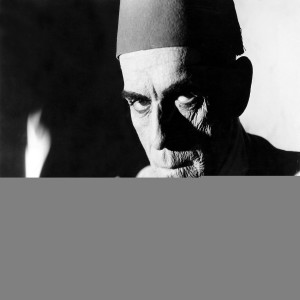


Sunday Oct 23, 2022
Season 6: Episode 271 - MAKE/REMAKE: The Mummy (1932)/The Mummy (1999)
Sunday Oct 23, 2022
Sunday Oct 23, 2022
The Mummy (1932)
The Mummy is a 1932 pre-code American supernatural horror film directed by Karl Freund and stars Boris Karloff. In the film, Karloff stars as an ancient Egyptian mummy named Imhotep, who is discovered by a team of archaeologists and inadvertently brought back to life by a magic scroll being read aloud. Disguised as a modern Egyptian named Ardeth Bey, Imhotep searches for his lost love, who he believes has been reincarnated as a modern girl. In recent times, the film has drawn criticisms for orientalism and the “othering” of Egyptian culture.
The Mummy (1999)
The Mummy, the 1999 American fantasy action-adventure film is a remake of the 1932 film starring Brendan Fraser, Rachel Weisz, John Hannah and Kevin J O’Connor. he film follows adventurer Rick O'Connell as he travels to Hamunaptra, the City of the Dead, with a librarian and her older brother, where they accidentally awaken Imhotep, a cursed high priest with supernatural powers. The film would spawn three sequels and be a box office success making over $416.4million worldwide.
Opening Credits; Introduction (1.05); Background History (20.03); The Mummy (1932) Film Trailer (21.44); The Original (23.18); Amazing Design Advertisement (52.37); Introducing a Remake (53.49); The Mummy (1999) Film Trailer (55.36); The Remake (57.43); How Many Stars (2.05.29); End Credits (2:20.01); Closing Credits (2:21.37)
Opening Credits– Epidemic Sound – copyright 2021. All rights reserved
Closing Credits: The Mummy Song (Egyptian Trilogy 1) by Colin Buchanan. Taken from the album I Want My Mummy. Copyright 1993 Wanaaring Road Music..
Original Music copyrighted 2020 Dan Hughes Music and the Literary License Podcast.
All rights reserved. Used with Kind Permission.
All songs available through Amazon Music.
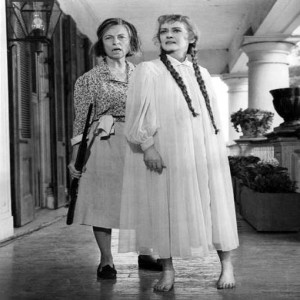


Sunday Oct 09, 2022
Sunday Oct 09, 2022
Book: Whatever Happened to Cousin Charlotte?
By Henry Farrell
Film: Hush, Hush Sweet Charlotte (1964)
Whatever Happened to Cousin Charlotte was a short story that was never published until years later as part of the novel Whatever Happened to Baby Jane novel.
The film was supposed to be the follow-up from Whatever Happened to Baby Jane bring back the two stars but due to the complications and problems between Bette Davis and Joan Crawford, Crawford dropped out after the start of filming to be replaced by Olivia de Haviland. The film follows a middle-aged Southern woman, suspected in the unsolved murder of her lover from decades before, who is plagued by bizarre occurrences after summoning her cousin to help challenge the local government's impending demolition of her home. The film would be nominated for seven Academy Awards and would co star Agnes Moorhead and Mary Astor in her last film role
Opening Credits; Introduction (2.31); Background History (28.49); Whatever Happened To Cousin Charlotte Plot Synopsis (29.44); Book Thoughts(34.10); Let's Rate (49.13); Introducing a Film (57.07); Hush Hush Sweet Charlotte Film Trailer (58.31); Lights, Camera, Action (1:01.22); How Many Stars (1:57.17); End Credits (2:08.03); Closing Credits (2:09.49)
Opening Credits– Epidemic Sound – co2:08/93pyright 2021. All rights reserved
Closing Credits: Deadly Valentine by LVCRFT, Scary Ana Grande, Deja Vudu & Count Tracukla. From the album Deadly Valentine. Copyright 2022 Spooky Never Sleeps
Original Music copyrighted 2020 Dan Hughes Music and the Literary License Podcast.
All rights reserved. Used by Kind Permission.
All songs available through Amazon Music.



Saturday Oct 01, 2022
Season 6: Episode 267: The Ivy Austin Interview
Saturday Oct 01, 2022
Saturday Oct 01, 2022
Ivy Austin (born Ivy Lynn Epstein; January 19, 1958 in Brooklyn, New York) is an American actress, singer, and voice-over artist, known for her performances on Garrison Keillor's A Prairie Home Companion, Grease 2, and her Sesame Street voices. She also starred on Broadway as Raggedy Ann. She has also acted as producer, director and artistic director on numerous productions. She also works as a marriage counsellor. She gives new meaning to the words multi-talented and her interview will be coming your way as we celebrate her career.
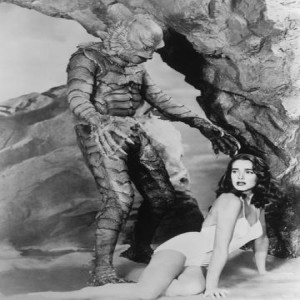


Sunday Sep 25, 2022
Sunday Sep 25, 2022
Creature From the Black Lagoon (1954)
The Creature From the Black Lagoon is a black and white 3D monster horror film directed by Jack Arnold. The film's plot follows a group of scientists who encounter a piscine amphibious humanoid in the waters of the Amazon; the Creature, also known as the Gill-man, was played by Ben Chapman on land and by Ricou Browning underwater. The film was filmed in 3D using a black and white polarised light method which is used today. On the video and beta version released in the 80s they would change this to the red and blue tinted glasses.
Shape of Water (2017)
Shape of Water is a 2017 romantic fantasy film directed by Guillermo Del Toro and is his love letter to The Creature From the Black Lagoon. Set in 1962, Baltimore, Maryland, the film follows a mute cleaner at a high security government facility who falls in love with a humanoid amphibian creature. She decides to help him escape from the hands of the evil colonel. The film would be nominated for 13 Academy Awards and would win three including Best Picture. After viewing Creature from a young age, Del Toro wanted to make a film where the creature and woman end up together at the end.
Opening Credits; Introduction (1.06); Background History (23.05);Creature from the Black Lagoon Film Trailer (25.09); The Horror (26.48); Amazing Design Advertisement (1:02.02); Introducing the Double Feature (1:03.13); Shape of Water Film Trailer (1:05.11); The Attraction (1:08.05); How Many Stars (2:07.15); End Credits (2:16.20); Closing Credits (2:18.29)
Opening Credits– Epidemic Sound – copyright 2021. All rights reserved
Closing Credits: You’ll Never Know by Renee Fleming. Taken from the Shape of Water Soundtrack. Copyright 2017 Decca Records
Original Music copyrighted 2020 Dan Hughes Music and the Literary License Podcast.
All rights reserved. Used by Kind Permission.
All songs available through Amazon Music.
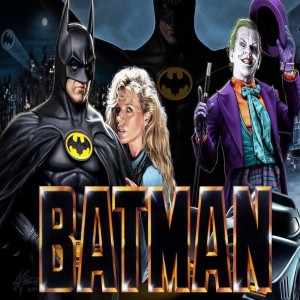


Saturday Sep 17, 2022
Season 6: Episode 264 - MAKE/REMAKE: Batman (1989)/Batman Begins (2005)
Saturday Sep 17, 2022
Saturday Sep 17, 2022
Batman (1989)
Tim Burton’s take on the Batman pathos would be a ground-breaking and box office winner which would take the world by storm. The film would divert from the Red Hood storyline as an origin story for the Joker but would give him a different story as Jack Napier, local gangster, falling into chemical acid to become the psychotic Joker. The film would be shot in England at Pinewood Studios with an inflated budget of $48million and would earn $400million at the box office. The film would take its inspiration between Alan Moore’s and Ryan Bolland’s The Killing Joke and Frank Miller’s The Dark Knight Returns.
Batman Begins (2005)
Batman Begins is a reimaging of the Batman with Christopher Nolan giving the film a darker and more realistic tone. The campiness would be laid to rest, and we would have a more serious tone. The film would give a retelling of the origin story with more complex themes. It would use three sources which includes The Man Who Falls, Batman: Year One and Batman: The Long Halloween. The film would be a box office success and would be the start of the trilogy now known as The Dark Knight Trilogy.
Opening Credits; Introduction (.38); Amazing Design Ad (11.18); Introduction Part 2 (12.30); Background History (34.54); Batman (1989) Film Trailer (36.15); The Original (38.04); Introducing a Remake (1:34.42); Batman Begins Film Trailer (1:36.25); The Remake (1:38.44); Preference Original or Remake (2:29.18); End Credits (2:38.09); Closing Credits (2:40.25)
Opening Credits– Epidemic Sound – copyright 2021. All rights reserved
Closing Credits: The Man Inside by David Fionix (single) Copyright 2020 EO Records. https://davidfionix.com/about-me/
Original Music copyrighted 2020 Dan Hughes Music and the Literary License Podcast.
All rights reserved. Used with Kind Permission.
All songs available through Amazon Music.
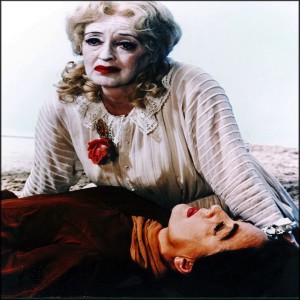


Sunday Sep 04, 2022
Sunday Sep 04, 2022
Book: Whatever Happened to Baby Jane
By Henry Farrell
Film: Whatever Happened to Baby Jane
(1962)
This American horror gothic suspense novel was published in 1960. The novel has since received cult status as would the film from 1962.
The film, starring Bette Davis and Joan Crawford and directed by Robert Aldrich would become a cult classic and the filming would become Hollywood legend with a book and miniseries about the making of the film proving to be a top best seller and highly rated television miniseries. The film follows a former child star terrorising her paraplegic sister in an old Hollywood Mansion.
The film would be nominated five Oscars and receiving one for Best Costume Design. It would also be the tenth and last time Bette Davis would be nominated for an Oscar. The film would receive an “X” rating in the UK in 1962 and it would be start of hag horror films which would become a stable for the next ten years. The film in 2021 was selected for preservation in the United States National Registry by the Library of Congress.
Opening Credits; Introduction (2.33); Background History (24.46); Plot Synopsis (25.31); Book Thoughts(31.32); Let's Rate (1:10.23); Introducing a Film (1:13.12); Film Trailer (1:15.21); Lights, Camera, Action (1:17.14); How Many Stars (2:15.44); End Credits (2:28.20); Closing Credits (2:30.48)
Opening Credits– Epidemic Sound – copyright 2022. All rights reserved
Closing Credits: Whatever Happened to Baby Jane by Debbie Burton and Bette Davis. Taken from the album Whatever Happened to Baby Jane soundtrack. Copyright 1962 – Warner Music
Original Music copyrighted 2020 Dan Hughes Music and the Literary License Podcast.
All rights reserved. Used with Kind Permission.
All songs available through Amazon Music.